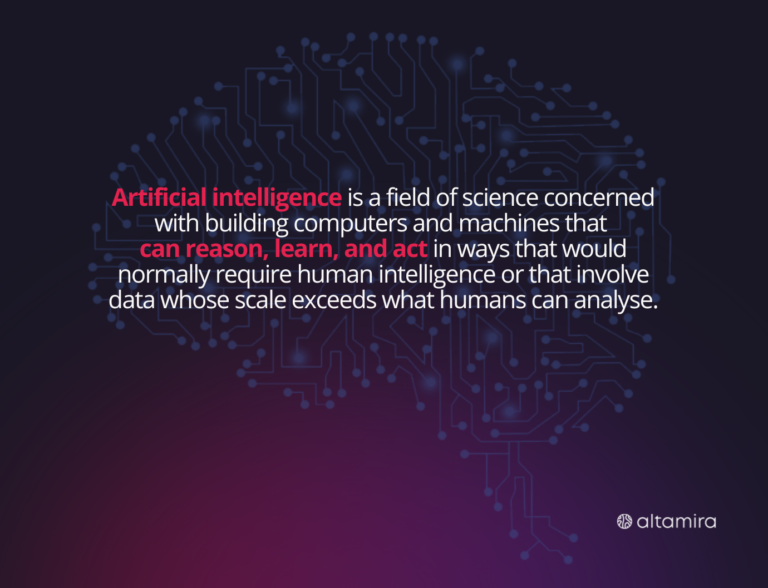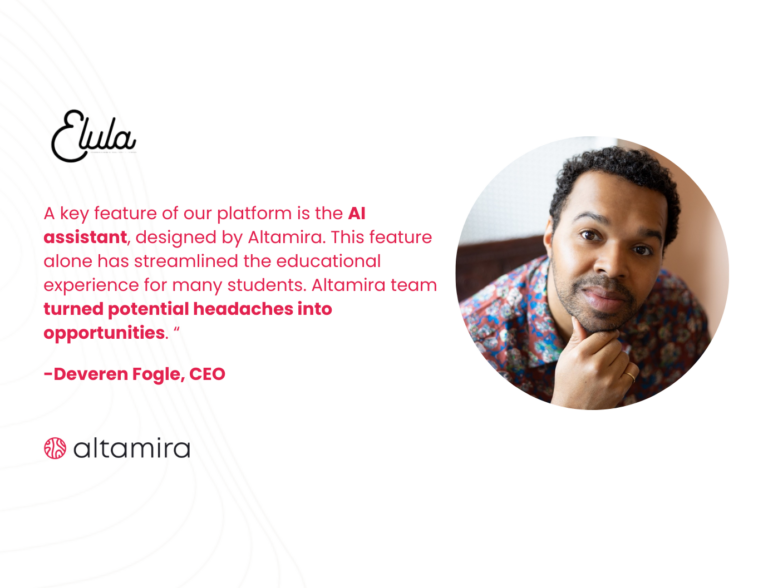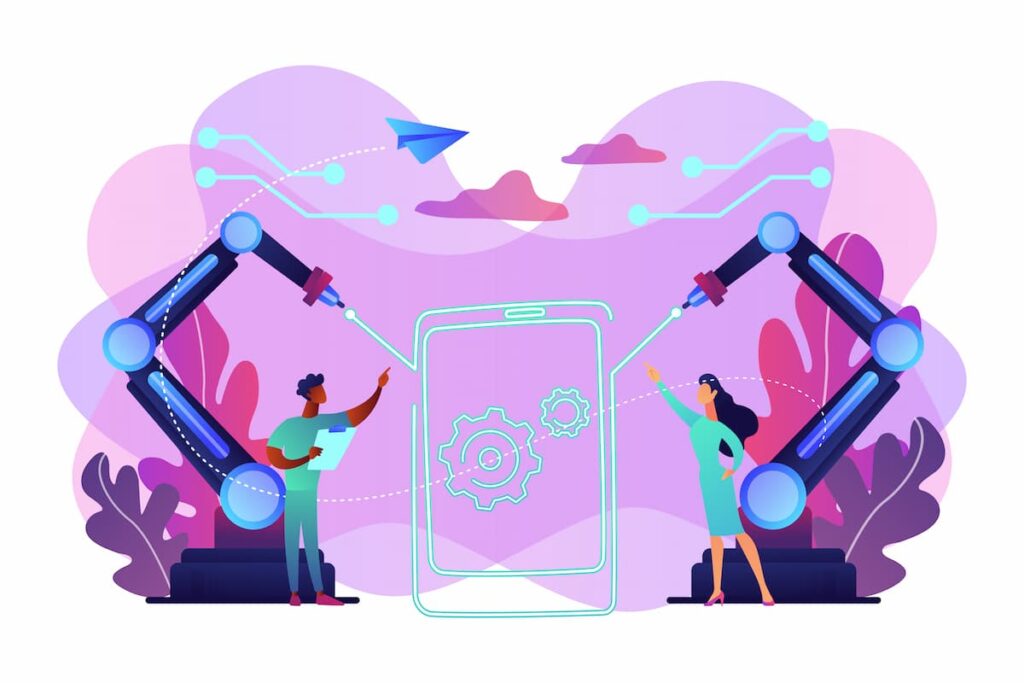Table of Contents
Technology is being integrated into our everyday lives. To meet the rising demands of clients, businesses are more often falling back to machine learning algorithms for automation.
Artificial intelligence, machine learning, and deep learning models are interconnected ecosystems, but their meanings are often swapped mistakenly, which can be confusing.
An effective way to understand AI, machine learning, and deep learning is to visualise them as nested AI systems, each fitting within the larger one.
Thus, AI serves as the broadest category, with a machine learning subset. Deep learning falls under the umbrella of machine learning capabilities.

A brief history of AI & ML
The emersion of artificial intelligence and machine learning can be traced back to the earliest computers, where engineers used arithmetic and logic to mimic the functions of the human brain.
Advances in medicine and neuroscience have enhanced our understanding of the mind’s nature, leading to a shift in AI’s focus toward emulating human decision-making processes.
In 1959, Arthur Samuel proposed a groundbreaking idea: that computers could be taught to learn on their own rather than having every detail programmed into them to perform tasks.
This concept marked a moment in the evolution of machine learning.
Another significant development came decades later with the internet, which began to produce, store, and analyse vast digital data .
Learn more about widely used neural networks for feature detection.
What is Artificial Intelligence?
The goal of AI systems has always been to enable computers to perform tasks that typically require human intelligence.

Over time, the term “artificial intelligence” has come to cover various applications where machines mimic cognitive functions that humans associate with the human brain, such as learning and problem-solving.
At its core, AI can start as a simple series of if-else statements that guide a machine to perform specific actions in designated situations.
However, as technology has advanced, there has been an increasing need for more complex techniques.
Machine learning and deep learning are the most common techniques, each representing a subfield of AI.
Wonder what is the fuss around responsible AI? Read more.
What is Machine Learning?
In a nutshell, machine learning involves teaching a machine to improve its performance.
ML can automate various tasks, so it affects nearly every industry, from streamlining healthcare to detecting fraudulent transactions.

Traditional hard-coded algorithms or rule-based systems proved insufficient for complex tasks such as image recognition or understanding text.
The solution lies not only in mimicking human behaviour (AI) but also in replicating the way humans learn.
Just as we improved our reading skills by starting with simple books and progressing to more complex texts, machine learning algorithm operates in a similar way.
The more data we provide to our brains, the better we become at reading.
In the same vein, machine learning involves feeding an algorithm a substantial amount of data, for example financial transactions, and identifying which ones are fraudulent.
The algorithm then learns to recognise patterns and signals of fraud to predict future occurrences.
Similarly, you could input data about your customer base, allowing the algorithm to determine the most effective way to segment them.
Thus, machine learning models are optimisation algorithms designed to minimise errors through iterative guessing and refinement, given they are properly fine-tuned.
As these algorithms advance, they can tackle a broad array of problems.
Despite their progress, certain tasks that humans find simple—such as handwriting—remained challenging for machines, which still lagged behind the human brain in these areas.
Learn what is the real cost of Artificial Intelligence in 2024
What is Deep Learning?
Deep learning is a specialised area within machine learning.
It employs a complex, multi-layered structure of algorithms known as neural networks.
These neural networks are designed to mimic the functions of the human brain, enabling them to “learn” from vast amounts of data.
While a neural network with a single layer might offer rough predictions, additional hidden layers enhance the model’s ability to refine and improve accuracy.
Many AI applications and services use deep learning to boost automation, performing analytical and physical tasks without human intervention.
For example, deep learning powers virtual assistants and self-driving cars.
To navigate effectively, a self-driving car must understand its environment, identifying pedestrians, bicycles, other vehicles, and road signs, even under difficult visual conditions.
Traditional machine-learning methods need to catch up in this regard.
The synergy of technologies: how they connect
- AI: Artificial intelligence encompasses both machine learning and deep learning. It represents a broad field of decision-making algorithms that exhibit intelligent behavior. The efficiency of AI is largely influenced by the efficiency of the ML and DL methods employed.
- ML: Machine Learning is a subset of AI that focuses on algorithms that enable machines to learn from data. While ML can handle data analysis, it is not efficient when it comes to processing large volumes of data.
- DL: Deep Learning is a specialised technique within ML that uses deep neural networks to analyse data and produce results. It is highly effective due to its ability to process and learn from extensive datasets.
Dive deep into price forecasting with Artificial Intelligence & Machine Learning technology

Types
- AI: Includes Artificial General Intelligence (AGI), which aims for a broad, human-like understanding; Artificial Super Intelligence (ASI), which surpasses human intelligence in all areas, and Artificial Narrow Intelligence (ANI), which is specialised in specific tasks.
- ML: Encompasses Supervised Learning, where models are trained on labeled data; Unsupervised Learning, where models find patterns in unlabelled data; and Reinforcement Learning, where models learn through trial and error to maximise rewards.
- DL: Comprises neural networks with numerous parameter layers, organised into four main architectures: Unsupervised Pre-trained Networks, Convolutional Neural Networks, Recurrent Neural Networks, and Recursive Neural Networks.
Examples of applications
Artificial Intelligence
AI technology has contributed to the advancement of various machine capabilities, including knowledge reasoning, planning, pattern recognition, and problem-solving.
Examples: Siri, Alexa Voice Assistance, Realbox Pulse
Voice-activated assistants are the cornerstone of the Internet of Things technology and are becoming a common item in homes worldwide.
The major challenge in developing these assistants lies in enabling them to understand human speech and, even more so, to accurately interpret commands given in various voices and accents.
This is where machine learning, natural language processing, and human-to-machine interfaces are binding.
These AI technologies facilitate automatic speech recognition and assist businesses in various ways, such as enhancing online shopping experiences, offering directions, providing in-house support, and optimising healthcare services, among other applications.
Machine Learning
To recap, machine learning contributes to a number of fields, triggering the development of:
- Image and speech recognition
- Statistical arbitrage
- Classification
- Prediction
- Extraction
- Financial services
Examples: FedEx, Sprint’s Predictive Analytics
Machine learning developments in predictive analytics are being used for customer retention strategies. Companies like FedEx use this data to identify customers who might switch to competitors, boasting accuracy rates of 60%-90%.
In addition to spotting potential churn to rivals, these firms can also forecast which customers are likely to cancel their deliveries—up to 10 times more likely.
Predictive analytics helps pinpoint the factors leading certain customer segments to disengage. With this insight, companies can refine their messaging and campaigns to effectively address these issues and retain their customers.
Deep Learning
Examples: Automated Driving
Deep learning plays a key role in the automotive industry’s efforts to create self-driving vehicles.
These innovations enable cars to operate autonomously by detecting and avoiding obstacles and pedestrians, and ongoing advancements aim to further reduce accident rates.
In the medical field, cancer researchers apply deep learning to identify malignant cells at an early stage.
For example, a research team at UCLA has developed a sophisticated microscope that leverages deep-learning datasets to detect cancer cells more effectively.
How AI, ML, and DL help in process automation
Altamira is at the forefront of enabling businesses to excel through AI-driven digital transformation solutions.
Our services enhance various aspects of operations, including process optimisation and deeper insights into education, inventory, and customer data.
Our clients have achieved a significant strategic edge by embracing a technology-focused business model.
We assist clients in revamping their existing services and products.
This includes access to a dedicated team of data scientists who develop algorithms that enhance system intelligence, speed, and accuracy in delivering strategic insights.
AI offers numerous benefits, including the automation of repetitive tasks, minimizing human error, and much more.
Automating routine tasks
AI technology automates routine activities such as data entry, manufacturing processes, and customer service interactions. This automation frees up human resources to concentrate on more strategic tasks.
Addressing complex issues
AI excels in analyzing vast amounts of data simultaneously, enabling it to uncover patterns and tackle complex challenges that might be too complex for humans, such as forecasting financial trends or optimising energy systems.
Enhancing customer experience
AI enhances customer experience through personalised recommendations, chatbots, and automated self-service tools. These innovations streamline interactions and help businesses improve customer satisfaction and retention.
Minimizing human error
By quickly identifying patterns and anomalies in large datasets, AI helps reduce human errors, ensuring greater accuracy and reliability in data management.
Our success story
Explore how Altamira delivered a revolutionary AI-powered solution for neuropsychological assessments and a child’s academic success which aims to simplify and expedite the diagnostic process, making it more accessible and less stressful for both children and their parents. Read more.

If you’re interested in achieving similar success or want to explore how we can support your business’s evolution, contact us today for free expert consultation.



